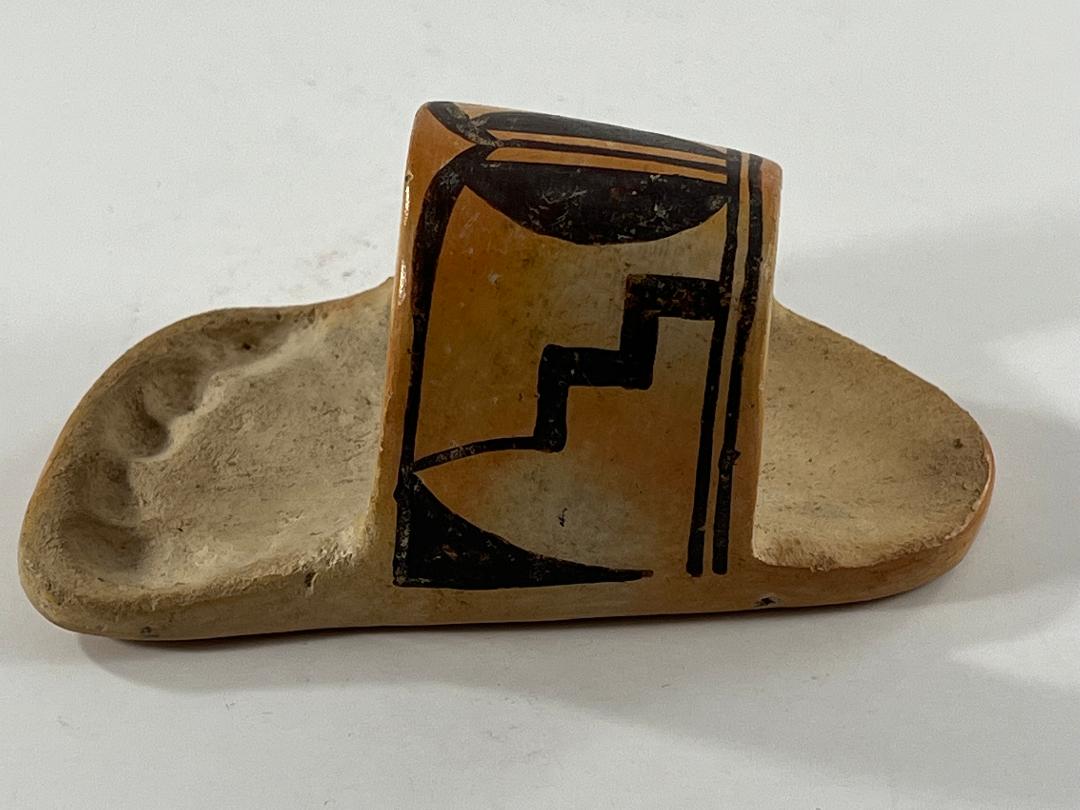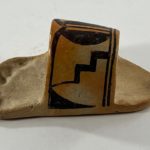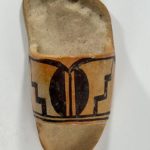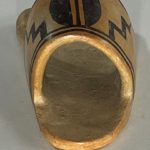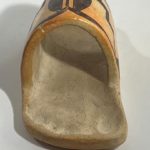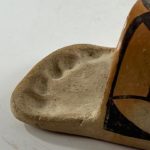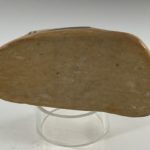This sandal is pure kitsch, and like all great kitsch it makes me smile: especially those little toe prints. Obviously it is tourist art and I don’t know if it was peddled with a purpose. I think of it as a napkin ring. Well-formed and carefully painted, it is a testimony to its maker’s commitment to her craft.
Form:
The flat sole of the sandal is highly polished on the exterior, striations running from toe to heel. The top surface of the sole is rough and unpolished and carries the perfect indentation of a foot, including those five toe marks. Arched over the sole is a wide strap of clay to secure the sandal to an imaginary foot. The strap is not symmetrical but leans a bit to the left. Its interior surface is somewhat polished. The exterior of the strap is finely polished and its surface carries all the painted decoration.
Design:
The design is monochromatic. The rear of the strap is marked with two parallel lines, a one-lane “highway.” At the peak of the strap is a “coffee bean” element, a two-lane highway flanked by two large hills. From the front point of each hill, a long, thin blade emerges, turning quickly downward toward the sole of the sandal, where it broadens into a right triangle with a slightly curved hypotenuse. Halfway up the side of the strap is a line with two steps that reaches about three quarters of the way across the surface. From its tip a small curved line emerges and touches the tip of the triangle below.
Design analysis:
The idea of a sandal napkin ring is cute. What qualifies this object as art is the care with which it is made. The design is simple but carefully formatted and painted. The “highways” display consistent and parallel lines. Within a very confined space, the “blades” off the front of each hill turn sharply downward without spilling over the edge of the strap. It would have been easy to simply continue the stepped line on the side of the strap across its full width. Instead the artist terminated this element midway and completed the transit with a thin curved line. That’s not a particularly difficult design to construct, but it does show care and attention to detail.
This attention to detail is most obvious when we see those tiny toe prints. This small detail gives the sandal a great boost of character. I smile or laugh every time I see these tiny imprints, as do others who examine this tiny shoe.
Although it was probably not in the mind of the artist who made sandal 2021-19, footprints are often found engraved on the cliffs near Hopi and are sometimes used as a design on pottery (2009-08).
So compelling is this sandal that I have purchased one linen napkin and plan to have a banquet for one.

